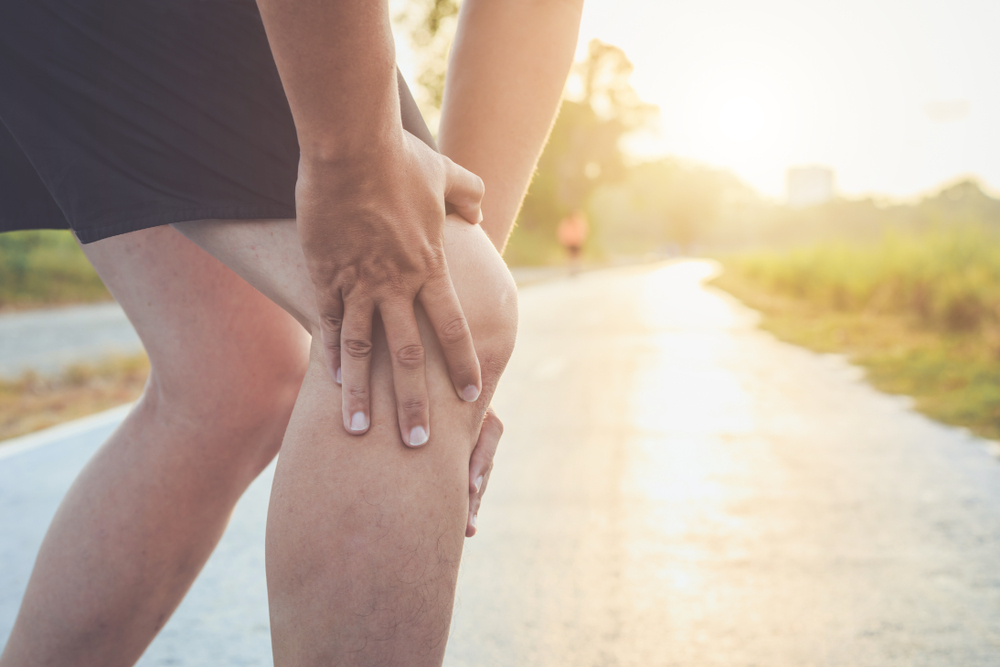From the time we start to walk, we balance our body weight on two legs. The bones that make up the knee joint — femur, tibia, fibula and patella — together bear the brunt of this. Together, they form a hinge joint, like that of a door. Their range of motion is limited. It is a strong and stable joint supporting the body while running, jumping and twisting. It does not withstand sudden rotational movements, which is why many injuries occur during sports such as basketball.
Although knee pain seems like a disease of older people, brought about by a lifetime of wear and tear, it can occur in children and adolescents as well.
Sudden acute pain can occur if there has been a fall resulting in a fracture or a torn ligament or meniscus inside the joint. Gradual onset and steady worsening of knee pain is more likely with injuries such as those causing bursitis, an inflammation in the fluid which cushion the joint. Runners, cyclists and other athletes can develop inflammation in the tendon connecting the patella (knee cap) to the thigh and shin. An injury can lead to a piece of bone or cartilage breaking off and entering the joint space, mechanically interfering with movement, painfully locking the joint. Long-distance runners and cyclists can suffer from IT band (ilio-tibial) pain. This is a tough band that runs on the outside of the thigh and knee. Dislocation of the knee cap or patella can also cause pain and occur frequently especially if this attachment is loose. Pain in the hip or foot can cause a change in gait, placing strain on one or both knees.
There are several different forms of arthritis, infective septic (usually bacteria), degenerative (osteoarthritis) autoimmune (rheumatoid), metabolic (gout and pseudogout). In children, painful knees may be due to an imbalance in growth, muscle strength and flexibility, or from overuse. It can be due to a growth-related disease like Osgood-Schlatter disease.
Knee pain is more likely to develop in overweight individuals. Athletes and construction workers also have repetitive stress on knees. It is aggravated by inflexible contracted and weak muscles.
To prevent knee damage and pain, achieve ideal body weight, strengthen the muscles around the knee joint, do stretching and yoga regularly.
Orthopaedic surgeons evaluate knee pain with a physical examination, Xrays, ultrasound, C T and MRI scans. Blood tests are done to check for gout, calcium levels, autoimmune diseases and diabetes.
Acute knee pain (provided there is no fracture) can be treated with a few days rest, the elevation of the affected leg, ice application every two hours and compression bandages. Analgesics can be taken to relieve the pain.
Most doctors will recommend a trial of structured physiotherapy and analgesics. If this does not work, they may remove loose bodies, repair damaged menisci and torn ACL (anterior cruciate ligament) tears. Many of these surgeries can be done arthroscopically (keyhole surgeries). Sometimes, an injection of a steroid or hyaluronic acid is given into the joint.
Total or partial knee replacement may be suggested for badly damaged knees. It is major surgery and not to be undertaken lightly. It is best done after the age of 65, if there is unbearable pain and lifestyle limitations such as an inability to climb stairs, get up from a chair or walk without a stick. The metal and alloy prosthesis used to replace the joint last about twenty years. A person who has replacement surgery at the age of 45 may require another surgery twenty years later.











